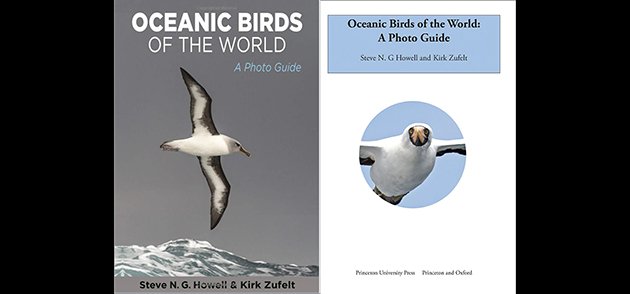
Are seabirds the last frontier of bird identification? Steve N. G. Howell and Kirk Zufelt certainly think so. They say so right here in the Preface of Oceanic Birds of The World: A Photo Guide—seabirds are “some of the most challenging of all birds to identify.” And, if you don’t believe them, just take a look at some of the photographic comparisons of species they present: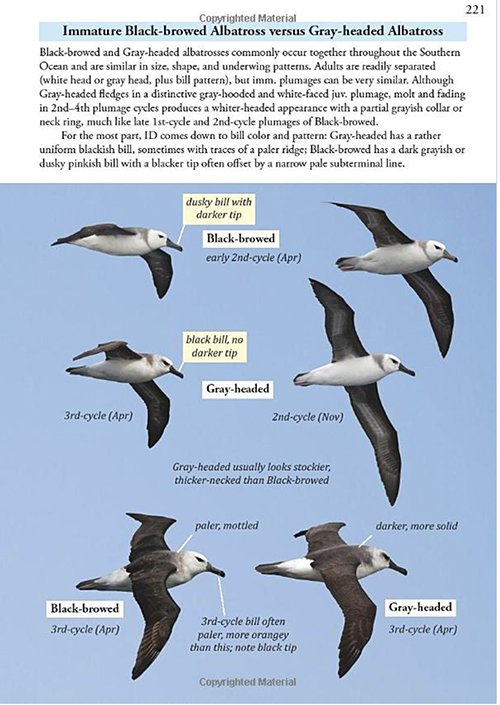
Or, read about the taxonomic confusions and scientific lapses in research on petrels, Albatrosses, storm-petrels, and diving-petrels. Unlike most other birds, we can’t spend time observing seabirds, getting to know them, because….they’re at sea! And, you need a boat. And, for many of these species, you need a boat that goes very far from shore, to extremely remote areas. And, it helps if you don’t get seasick. And, if you have resources for travel. All of which is to say that there are a number of obstacles, both scientific and pragmatic, to seabird identification, and there are very few guides around to help us. Which makes the publication of Oceanic Birds of The World: A Photo Guide a significant and happy event.
This is the first book since Peter Harrison’s classic Seabirds: An Identification Guide (1983, rev. 1985) and Seabirds of the World: A Photographic Guide (1987) that covers all species of birds that spend most of their lives foraging, feeding, and flying over and on oceans, and, when not at sea, breeding in remote, inaccessible places. It aims to present identification facts and guidance for roughly 270 species of oceanic birds found throughout the world in a compact format. It is also an informal assessment of the state of our knowledge of oceanic birds, presenting a depth of field and book information with critical commentary that can only be found in a bird guide co-authored by Steve N. G. Howell.
Scope of Book: But first, (1) what is meant by ‘oceanic birds’ and (2) is that term any different from ‘seabirds’? The answers are: (1) the definition is what the authors have decided based on their experience and knowledge of taxonomy, and (2) the terms ‘oceanic birds’ and ‘seabirds’ are interchangeable (so, I will use both in this review). These are the bird families covered: Penguins, Alcids, Diving-Petrels, Petrels, Albatrosses, Storm-Petrels, Tropicbirds, Frigatebirds, Gannets and Boobies, Skuas and Jaegers, Gulls, Noddies, Terns, Phalaropes. Coverage of all families is not comprehensive. Only four gull species, three tern species, and two phalarope species are covered. The reasoning is that most of the species in these families are birds seen near shore, but not at sea. “To our mind, true seabirds are birds of the ocean, birds you generally go on a boat to see” (p. 6). This is an interesting contrast to Harrison’s Seabirds: An Identification Guide, which included loons, grebes, pelicans, cormorants, ‘sea-ducks’ (though not in depth), and all gulls and terns. I can only imagine how huge this book would be if all those species, and what we’ve learned about them in the past 32 were included. The Introduction states in detail the families of oceanic birds and the genera within each family that are included, and why (many taxonomic studies are cited).
Species Accounts: Each Species Account Section starts with species and genera totals in that particular bird group, and text summarizing common and differing characteristics. This includes geographic areas; similarity or non-similarity by age and sex; feeding behaviors; flight patterns; nesting behavior; molt periods, and general appearance. At this point, the organization gets a little confusing. For the smaller bird groups, like Frigatebirds, a visual table-of-contents presents a small photo of each species and page number–simple and easy to follow. Larger groups, like Storm-Petrels, are divided into smaller groups, which are described in text boxes followed by a visual table-of-contents. I think this organization makes sense to the authors; there’s some lack of standardization (for example, listing species in some subsections and taxa groups in others), that only makes sense once you’ve read the text thoroughly.
The amount of information for each species varies widely, depending on identification issues (penguins are pretty straightforward, storm-petrels not so much), taxonomic complexities, and what has been documented about the bird. Information for each species includes, at the minimal: common name, scientific name, measurements, general geographic location, breeding and distribution ranges, and abundance. Most descriptions also include flight style and habits; does it tend to fly with other species? Which ones? Does it follow fishing boats? Also, for some species, information on molt periods, vocalizations, and population numbers.
Distribution maps are presented for many but not all species, showing breeding areas, at-sea distribution, and main periods of occurrence. The authors explain in the Introduction that distribution is not as helpful for identification of seabirds as they are for other birds due to the creatures’ tendency to wander, though it “is a good place to start.” They only provide distribution maps for species in “less well traveled” regions and where they are useful for comparative purposes. Many maps note that the outlines are ‘provisional,’ reflecting how little we know about this topic. The very focused distribution maps are supplemented by larger maps in the Appendix, showing the islands and other locations cited in the Species Accounts, giving us a larger geographic perspective (and emphasizing to those of us in North America just how far away most of these birds are).
It is the photographs, however, which give the core identification information and which most users will be looking at first, second, and last. The photos dominate each page, reaching from end to end with no borders and little separation. They present each species flying in the air, swimming (or sitting?) on the ocean, and occasionally brooding in the nest. Mostly, the birds are shown flying; we see them from the side, from underneath, from the top, wings spread wide, up, and down. Though the number and intensity of the images on the page sometimes seems overwhelming, each photo is there for a purpose. Captions in yellow boxes spell out major identification characteristics. Additional text, unboxed, gives age and sex of birds and secondary identification information. Care has been taken to align the photographs and photo plates so the birds always face right, allowing for a consistency of view that makes comparative examination easier. (Well, I spotted several exceptions–group photos of Noddys and a lovely Cape Gannet, but there are reasons for these lapses.) And, the sizes of the birds on each page are always in proportion. Most of the over 2,000 photographs are by the authors; additional photographers are credited in the back, though not by photo.
A number of species are presented as in terms of species complexes–similar-looking species that were once considered subspecies (for example, the Royal Albatross complex pictured above, now considered to be two separate species–Northern Royal Albatross and Southern Royal Albatross), or cryptic species, like the Leach’s Storm-Petrel Complex, composed of Leach’s Storm-Petrel, Townsend’s Storm-Petrel, and Ainley’s Storm Petrel, species for whom the taxonomy is still muddled, for example, the Band-rumped Storm-Petrel Complex. These species accounts are amongst the most detailed and fascinating in the book. Howell and Zufelt present a wealth of material–comparative distribution maps, comparative photographic plates with arrows pointing to distinguishing field marks, close-ups of bills and wings–designed to teach birders how to distinguish between species that must look indistinguishable at sea. It is impressive work.
A note about the taxonomy used in the guide: the authors have not utilized one single system. They state in the Introduction that “The state of seabird taxonomy is still fluid, and we have tried to pick a realistic course through myriad taxonomic papers…” (p. 14). The seven-page introductory section on “Taxonomy and Types of Oceanic Birds” goes through each bird family and explains their taxonomic decisions, noting areas where recent
DNA research has resulted in new taxonomic organization and other areas where the assignment of species status is still murky. The cited research papers here (and throughout the book) are listed in the back of the book, in an excellent four-page, small-print References section.
Design and Organization: Seven years ago Steve Howell wrote a two-part article for the ABA Blog entitled “So You Want to Write a Bird Book? Six Decrees of Superation,” strongly arguing for identification guides that feature clean, uncluttered illustration plates with birds identified on the page, not by a number. This was my first thought when I flipped through Oceanic Birds of the World (and Howell’s earlier field guide with Princeton University Press, Birds of Chile: Photo Guide, co-authored with Fabrice Schmitt, 2018)–here are the bird names, age, sex, and distinguishing traits, right on the image page, just like he said it should be done! And then there was the inevitable second thought–why are the pages so crowded? Where is the clean, Sibley-like design he advocated? As I wrote above, the photographic plates stretch across the page, overwhelming the text and confusing the eye. The confusion becomes particularly intense when scanning the dark-bodied Shearwater and Storm-Petrel sections, with their dark birds posted against smoky blue backgrounds. Once I started reading Oceanic Birds of the World, however, really focusing on it, the design and layout of the photographic plates became easier to follow. I’m still not in love with this field guide design. I imagine that compromises had to be made–giving up white space for multiple images of cryptic birds, crowding photos onto a page so the book won’t weigh a ton–and I wonder if there is a way to produce an eBook version that is just a little neater and cleaner.
Organizationally, this is a book designed for the user. Introductory material includes material of “How To Use This Book,” a brief glossary of terms and the aforementioned section on taxonomy. There’s also brief lessons on “Identifying Seabirds at Sea,” “Molt” (of course, this is a Steve Howell guide), “Where and How to See Oceanic Birds” (some interesting tips on avoiding seasickness–how does one move with the ocean?), and “Conservation.” I love the authors’ lament that “introductions to bird books often seem to go unread…” (p. 14.). Welcome to my cause! Back of the book material includes the previously described section on “Geographic Locations;” a section on “Taxonomy and English Names” with “Recently Described and Provisionally Split Species” (five pages long); Acknowledgements; References; Index; and, almost hidden, a visual guide to “Some Anatomy and Plumage Terms.”
To help users find birds quickly, the guide offers a “Pictorial Contents” page on the first two pages (too bad this couldn’t be on the inside front cover) that the authors hope will quickly get the birder to the correct bird group. There are also visual contents pages within the family group sections, though to find them you may have to use the print tables of contents; there are two–the Contents page shown at the top of this review and a “Species Accounts and Plates” listing. In addition there is a brief Index. It lists pages by common name only, which makes it easy to quickly find the bird you’re looking for. Still, I do wish that the species names in the Species Accounts were printed larger; if you’re using the flip-the-pages browsing method of finding a bird, which I often do, it’s very hard to see the names amongst the photos, labels, and text.
Authors: Steve N. G. Howell is possibly the most prolific bird book author alive today. I’ve lost track of all the books written and co-written by him that have been reviewed in 10,000 Birds, but I do know they include three books on seabirds: Petrels, Albatrosses, and Storm-Petrels of North America: A Photographic Guide (PUP, 2012); Offshore Sea Life ID Guide, West Coast (PUP, 2015); and Offshore Sea Life ID Guide, East Coast (PUP, 2015) and a major book on gulls: Peterson Reference Guides to Gulls of the Americas (HMH, 2007). He has authored numerous articles, popular and scientific, on seabirds, Mexican and Central American birds, molt, and other avian topics. He is also a tour guide for Wings. In contrast, this is Kirk Zufelt’s first book. A physician from Ontario, Canada, Zufelt is also an avid pelagic birder and photographer whose quest, as stated on his blog, Pelagic Odyssey, is to see all the world’s seabirds. I’m linking to Zufelt’s blog even though it’s a little out of date because it shows some of the photos that made their way into the book, and because it shows his total enthusiasm for and knowledge of the subject.
Conclusion: Oceanic Birds of the World is poised to replace Peter Harrison’s Seabirds: An Identification Guide as THE book on identifying seabirds. (Though, I wouldn’t throw your Harrison’s away if you are lucky enough to own a copy, the artwork and extensive text descriptions are a nice complement to the more recent photographic guide.) The primary focus on identification is an interesting contrast to Howell’s earlier book on Petrels, Albatrosses, and Storm-Petrels of North America, which is more of a reference resource and traditionally organized, with double columns of text and neat, wide margins. And, of course, the Petrels book only covers specific families North American seabirds. Similarly, Ken Behrens and Cameron Cox’s Peterson Reference Guide to Seawatching: Eastern Waterbirds in Flight (HMH, 2013) covers a wider range of families but only those that are seen from shore or boat on the eastern coast of North America. The two Offshore Sea Life ID Guides cited above are highly condensed identification guides meant to be brought along on North American pelagics.
Oceanic Birds of the World: A Photo Guide by Steve N. G. Howell and Kirk Zufelt is a remarkable bird guide; it contains an unusual depth of ornithological and taxonomic knowledge combined with field expertise, organized in a readable manner that focuses almost entirely on bird identification. It is full of visual identification goodies and smart observations, facts and maps, up-to-date taxonomy and hundreds of photographs; it’s organization is crowded but deliberate, there is not a photograph or sentence in this book that does not have a function. This is clearly a book for intermediate and advanced birders with a passion for pelagic birding. But, as with many excellent guides, there is material here for beginning birders and even birders like me, who associate seabirds with extreme seasickness. (In my case, I’m thinking of the Brown Booby species account, which came in handy when identifying a very far off Sulid from shore a week ago.) The pelagic season on the Atlantic coast is winding down, but for some the time for preparing for that South African or Australian pelagic is just beginning, and this book is the perfect. resource.
Photo Credits:
The authors state that most of the images used are their own. Cover photo of Gray-headed Albatross by Kirk Zufelt. Since photo credits for images other than front and back covers and not detailed, I am reproducing the photo credit paragraph from the Acknowledgements section.
Oceanic Birds of the World: A Photo Guide
by Steve N. G. Howell and Kirk Zufelt
Princeton University Press, 2019
360 pp.; 5 3/4 x 8 1/4; 368 color plates. 114 maps.
$35.00 paperback (slightly less from the usual suspects); $19.25 Kindle
ISBN 9780691175010 (paperback)


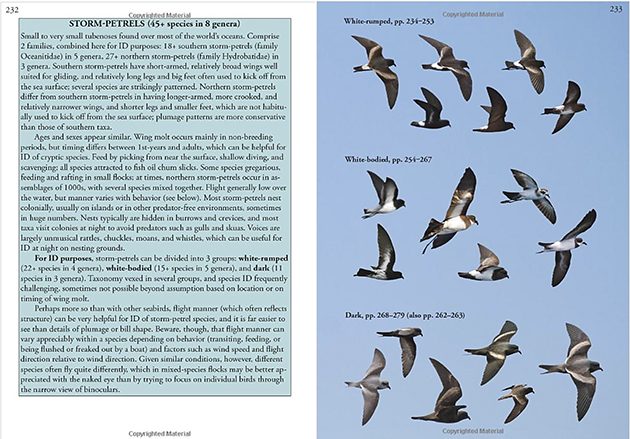
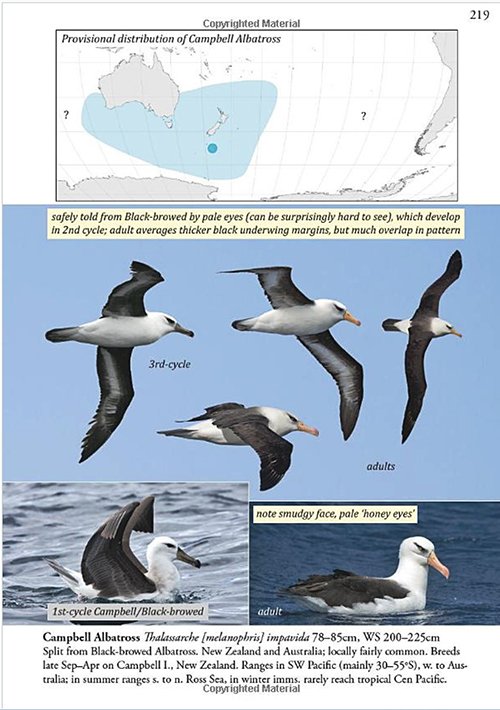
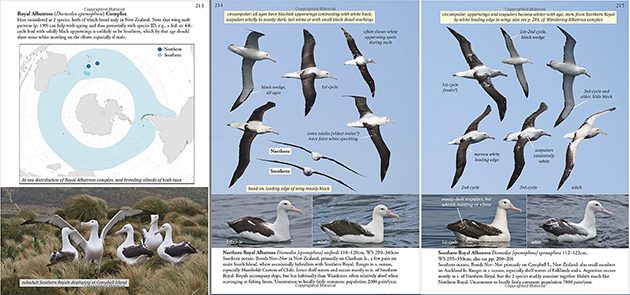
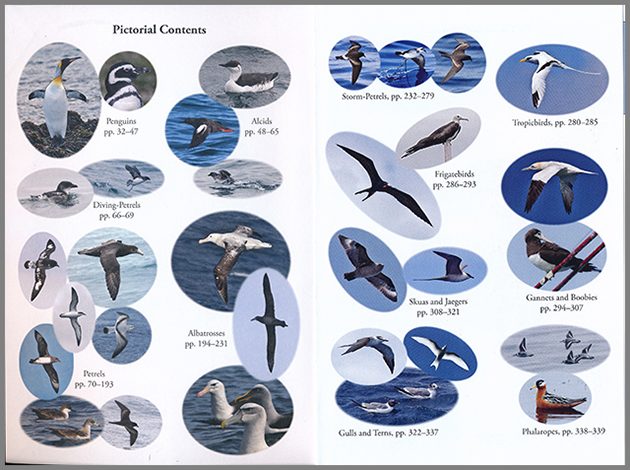
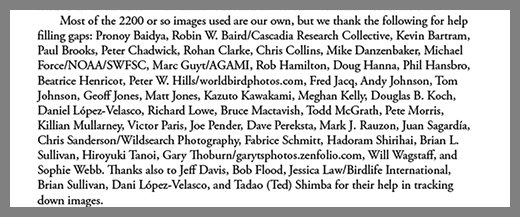











Great Review. Thank you!